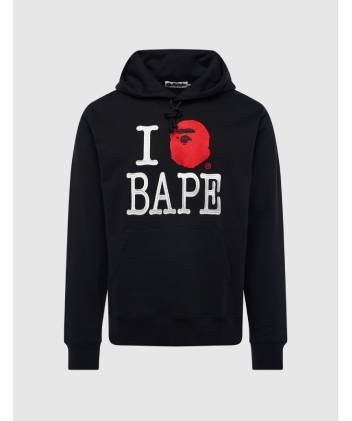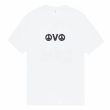Introduction to Bape (A Bathing Ape)
Bape, or A Bathing Ape, didn’t just stroll into the fashion scene—it stomped in with a swagger. Born in the bustling heart of Tokyo’s Harajuku district in 1993, Bape emerged from the brainchild of Nigo, a DJ and fashion visionary with a knack for the avant-garde. Back in the ’90s, Japan was buzzing with creative energy, and Nigo knew just how to tap into that vibe. Inspired by pop culture, sci-fi, and vintage American fashion, he combined bold patterns, edgy graphics, and an unapologetic street flair to create what we now revere as Bape.
The idea wasn’t just to sell clothes. It was about creating a lifestyle, a movement that blurred the lines between high fashion and urban edge. In a world full of muted tones and safe choices, Bape Clothing was loud, wild, and proud. It drew in rebels, trendsetters, and culture chasers alike. And let’s be honest—when you rock Bape, you’re not just wearing a hoodie or tee. You’re making a statement.
The Founder and His Vision
Tomoaki Nagao, better known as Nigo, wasn’t just a fashion designer—he was a cultural architect. His vision for Bape extended beyond just clothing; it was about curating a unique ecosystem that combined music, lifestyle, and self-expression. Think of him as the Japanese equivalent of Pharrell Williams before they even collaborated.
Nigo’s background in editing and music gave him a distinct edge. He understood visuals. He understood beats. And more importantly, he understood youth culture. His vision was clear: disrupt the norm, and don’t apologize for it. From the start, Bape had this mysterious allure. With extremely limited drops and nearly unreachable exclusivity, the brand built demand through scarcity. Nigo didn’t flood the market. He made fans chase Bape like treasure.
He also introduced the concept of “hype” before hype was even a buzzword. People lined up for hours just to get their hands on the latest drop. It was genius marketing—make it rare, make it desirable, make it iconic.
How Bape Got Its Name
Let’s talk about the name—it’s not just cool; it’s clever. A Bathing Ape in Lukewarm Water is the full version, derived from a Japanese saying that criticizes people who overindulge. The irony? Bape itself became a symbol of luxury and indulgence in streetwear. The name is a cheeky nod to modern excess, and it hits harder when you realize Bape garments often come with premium price tags and fierce competition.
In essence, the name mocks while it glorifies. It speaks to a generation that wants it all—style, comfort, status—and is willing to go the extra mile to get it. With that kind of philosophy stitched into its very name, is it any wonder Bape became a legend?
Rise of Bape in Streetwear Culture
The Hip-Hop Connection
You can’t talk about Bape without talking about hip-hop. The two go together like sneakers and pavement. In the early 2000s, Bape jumped from the streets of Tokyo to the closets of some of hip-hop’s biggest stars. Artists like Pharrell Williams, Kanye West, and Lil Wayne weren’t just wearing Bape—they were flaunting it like streetwear royalty.
Pharrell, in particular, became an unofficial ambassador of the brand. His Billionaire Boys Club brand even collaborated directly with Bape, blurring the lines between fan and creator. Kanye West pushed the brand to even greater heights when he donned custom Bape sneakers and hoodies in music videos and public appearances. Suddenly, what was once a Japanese streetwear secret became a global obsession.
Hip-hop culture embraced Bape because it was loud, defiant, and exclusive—everything rap music celebrates. When artists showed up to award shows or music videos in full Bape gear, they weren’t just making a fashion choice—they were making a power move. They wore the brand like armor.
Celebrity Endorsements and Collaborations
Bape’s marketing strategy was practically guerrilla warfare—silent, precise, and wildly effective. One of its strongest weapons? Celebrity endorsement. Unlike traditional fashion houses, Bape didn’t just pay celebs to wear their gear. It created relationships.
Beyond hip-hop, celebrities across film, sports, and pop culture caught the Bape bug. From Travis Scott and Rihanna to LeBron James and Justin Bieber, the list of Bape-lovers reads like a VIP guest list for the Met Gala.
Then came the collabs. Bape mastered the art of the limited-edition drop. By teaming up with brands like Adidas, Supreme, Marvel, and even Coca-Cola, Bape kept fans on their toes. Every drop felt like an event, a moment. And that exclusivity? It’s marketing gold. Each piece told a story, blended cultures, and sold out faster than you could say “Add to Cart.”
Global Popularity Surge
Initially confined to Japan, Bape’s influence couldn’t be caged for long. Thanks to the digital age and globalization, Bape quickly spread its camouflage wings and landed in fashion hotspots across the world—London, New York, Paris, and beyond. And with the rise of social media, fans could flaunt their gear to millions, turning Bape into a worldwide streetwear phenomenon.
Bape stores—often referred to as Bape Stores or Bape Galleries—became pilgrimage sites for fashion lovers. These weren’t just retail outlets; they were immersive experiences. Think sleek designs, rare collectibles, and exclusive merch that could only be purchased in-store. No wonder the lines often stretched around the block.
With expansion came innovation. Bape began tailoring its offerings to regional tastes while retaining its core identity. Whether in Hong Kong, L.A., or Shanghai, the message was the same—Bape is not just a brand. It’s a movement.
Signature Elements of Bape Clothing
Bape Camo – The Iconic Print
What makes Bape instantly recognizable? The camo. But this isn’t your dad’s military gear—we’re talking about colorful, chaotic, eye-catching camouflage that pops. The Bape camo (also known as 1st Camo) is a trademark, featuring hidden Ape Heads subtly woven into the pattern. It’s the kind of print that screams confidence.
Released in various colorways—green, blue, pink, red, and more—each variation has its own cult following. And let’s not forget the ABC Camo, a modern iteration that’s become a staple in new releases. The camo doesn’t blend in—it stands out. It’s bold, brash, and impossible to ignore, much like the brand itself.
You’ll find the Bape camo everywhere—from hoodies and tees to sneakers and accessories. It’s not just a design choice—it’s a lifestyle signature.
Shark Hoodies – A Cult Favorite
If there’s one item in Bape’s arsenal that single-handedly turned heads and sparked international hype, it’s the Bape Shark Hoodie. Introduced in the mid-2000s, this hoodie became the face of Bape’s streetwear domination. What made it so unique? That ferocious, full-zip shark face stitched right onto the hood. This wasn’t just apparel—it was wearable art.
The shark hoodie features a full zip that closes all the way up over the face, revealing a fearsome shark mouth and bulging eyes inspired by WWII fighter plane nose art. It’s bold, playful, and entirely unapologetic. The inclusion of bold patches like “WGM” (World Gone Mad) and vivid color combinations gave each hoodie a vibrant personality. No two felt exactly the same.
Streetwear fans loved it because it was outrageous yet tasteful. It gave off a vibe that said, “Yeah, I know what I’m wearing—and you wish you did too.” Celebrities sported shark hoodies in music videos, concerts, and even red carpet events. The demand shot through the roof, and resale prices soared accordingly. Owning a Shark Hoodie became a status symbol, a trophy for those deep in the streetwear game.
Bape didn’t stop there. The brand iterated on this piece, releasing seasonal versions, colorways, and collaborative editions that kept the design fresh. Even today, the Shark Hoodie remains one of the most coveted and iconic pieces in the brand’s catalog.
Ape Head and Bold Logos
Brand identity is everything, and Bape nails it with the Ape Head logo. Inspired by the 1968 movie Planet of the Apes, the logo is instantly recognizable—stylized, minimal, and loaded with symbolism. It represents rebellion, intelligence, and primal energy—fitting, right?
The Ape Head appears on almost every Bape product, from tees and hats to sneakers and accessories. But Bape doesn’t just slap a logo on and call it a day. The execution is top-notch. You’ll find embossed logos, stitched insignias, printed designs, and even holographic versions on tags to authenticate real Bape gear. That level of detail matters to fans and collectors alike.
Then there’s the text logo—A Bathing Ape. It’s often printed in bold, capital letters across chest pieces or down the side of pants and hoodies. Whether used minimally or as an all-over graphic, it’s a style statement that says, “You know the brand. Respect the drip.”
Both the Ape Head and text logo have become fashion statements in their own right. They carry weight in the culture. When you wear them, you’re not just showing off your fashion sense—you’re signaling your streetwear IQ. That’s the kind of recognition most brands can only dream of.
Bape Clothing Collections
Seasonal Releases and Drops
Bape doesn’t follow the traditional fashion calendar. Instead, it drops seasonal collections multiple times a year—Spring/Summer and Fall/Winter—each packed with new colorways, cuts, and experimental designs. What makes these releases so special is that they feel like mini-events. Fans eagerly await lookbooks, lineup previews, and drop dates, often camping out in front of Bape stores just to be among the first.
Each season introduces a blend of staple items—like camo jackets, shark hoodies, and graphic tees—alongside fresh takes such as embroidered denim, neon accessories, or innovative sneaker models. Bape Shorts Some collections are rooted in nostalgia, drawing from past favorites, while others push boundaries with new silhouettes and tech fabrics.
One of Bape’s biggest strengths is consistency. Even as it evolves, each drop feels distinctly Bape. That delicate balance of innovation and brand identity is why loyalists keep coming back. They know that whether it’s Summer 2022 or Fall 2025, they’re going to get that bold, statement-making design they crave.
The brand also leverages lookbooks that feature edgy models, unique poses, and thematic visuals, making each collection feel like a story, not just a product line. This storytelling elevates the brand above simple retail—it’s an experience.
Exclusive Limited Editions
Now here’s where the real thrill kicks in—limited-edition drops. Bape has perfected the art of scarcity. By releasing capsule collections in extremely limited quantities, they create a fever-pitch demand. Fans rush to cop a piece before it’s gone, and often, it’s sold out within minutes.
These limited editions often celebrate anniversaries, cultural icons, or rare collaborations. Think Bape x Star Wars, Bape x SpongeBob, or Bape x Dragon Ball Z. The wild blend of pop culture with streetwear creates collector gold. Owning a limited-edition Bape piece is like holding a rare comic book—it’s wearable but also worthy of a glass case display.
It’s not just tees and hoodies either. Limited editions cover everything—sneakers, caps, accessories, home goods, even baby clothes. Bape’s attention to exclusivity fuels resale markets where a $200 hoodie might resell for $800 or more.
And because Bape never restocks these limited drops, the value often increases with time. It’s not just fashion—it’s investment.
Collaborations with Big Brands
One of Bape’s strongest pillars is its long-standing tradition of jaw-dropping collaborations. Over the years, Bape has partnered with some of the biggest names in fashion, entertainment, and even food and beverage. The genius? These collabs never feel forced. They’re authentic, playful, and deeply rooted in pop culture.
Here are some notable collaborations:
-
Bape x Adidas – merging performance wear with street flair.
-
Bape x Supreme – an epic union of two streetwear giants.
-
Bape x Coca-Cola – turning soda pop culture into wearable designs.
-
Bape x Marvel – superhero graphics with camo twist.
-
Bape x Comme des Garçons – fusing luxury and streetwear chic.
Each collaboration comes with its own set of exclusive pieces—T-shirts, sneakers, jackets, or accessories—often designed with unique branding, co-branded logos, and unforgettable colorways. Fans love the anticipation and unpredictability of what Bape will drop next.
But Bape doesn’t just go for hype. They’re selective, working only with brands that match their aesthetic and vision. That’s what keeps the collabs fresh—and the fanbase hungry.
Quality and Craftsmanship
Materials Used in Bape Apparel
While Bape’s designs are flashy and fashion-forward, what truly sets them apart from many streetwear contenders is their commitment to quality materials. Bape apparel isn’t just about looks—it’s built to last. Every piece is constructed with carefully sourced fabrics that not only elevate the feel but also ensure durability and comfort.
Let’s talk cotton—Bape uses heavyweight, 100% premium cotton for most of its T-shirts and hoodies. These aren’t your average tees; they have a structured feel, don’t shrink easily, and hold up after dozens of washes. The stitching is thick and tight, giving each piece a luxury-grade finish. This attention to detail is part of the reason why fans are willing to pay top dollar.
Beyond cotton, Bape also incorporates premium fleece, denim, ripstop nylon, and high-grade polyester blends into its clothing. Jackets come lined with quilted interiors for extra warmth, and pants often include reinforced seams and zipper finishes. Even the labels, tags, and embroidery are crafted with care, adding to the high-end streetwear vibe.
In accessories and footwear, the same level of material consciousness prevails. Leather, suede, canvas, and EVA soles dominate their sneaker builds, which often rival other designer sneakers in both comfort and performance.
Bottom line? Bape may look like casual streetwear, but its construction and materials speak the language of high fashion. It’s built for those who want to look fly today and keep that same energy for years to come.
Production and Design Process
The magic behind every piece of Bape clothing lies in its meticulous production and design process. From ideation to the final stitch, each item goes through several stages of planning, testing, and crafting—often months before it hits the store shelves.
Bape’s internal design team works out of Tokyo and is heavily influenced by Japanese minimalism mixed with global street trends. They brainstorm graphic designs, fabric types, color palettes, and silhouettes, always keeping the brand’s legacy in mind while pushing boundaries. Inspiration comes from everything—comic books, music, military aesthetics, anime, architecture, and beyond.
Once the initial concepts are solidified, Bape creates mockups and prototypes. Samples are reviewed by design heads and often tested for fit, comfort, and color fastness. This R&D phase ensures that the final product is as close to perfection as possible.
Manufacturing usually takes place in Japan and China, where Bape works with select factories known for high standards. From digital printing to embroidery and applique, each detail is executed with care. Every piece is subjected to rigorous quality control checks to ensure consistency in sizing, stitching, and labeling.
The entire process is a blend of traditional craftsmanship and modern innovation—exactly what you’d expect from a brand that redefined streetwear as a form of wearable art.
Attention to Detail
The devil is in the details—and Bape excels at devilish detail. Look closely at a genuine Bape hoodie or tee, and you’ll notice the small touches that separate the real deal from imitators.
For starters, Bape tags are works of art. Most garments come with woven tags featuring the Ape Head logo and sizing written in a unique font. Higher-end pieces include holographic security labels that help distinguish authentic items from fakes. Even the zippers have personality—often engraved with the Bape logo or shaped into custom pulls.
Seams are double-stitched. Embroidery is tightly looped and vibrant. Pockets are aligned perfectly. You won’t find sloppy craftsmanship here. Even the camo patterns are mirrored precisely on sleeves and pants, showing how much thought goes into each design.
Graphic prints are another standout. Unlike many streetwear brands that use basic screen printing, Bape utilizes high-resolution digital printing and multi-layered silk screens that ensure bold colors, no bleeding, and long-lasting clarity.
This obsession with detail doesn’t just impress—it creates trust. Fans know they’re buying a product that’s not only stylish but meticulously crafted from concept to completion. And in the fashion world, trust is everything.
The Bape Lifestyle
Bape Stores Around the World
Part of what fuels the global mystique around Bape is its unique retail presence. Bape Stores, sometimes called “Busy Work Shops,” are not your average clothing outlets. They’re designed like high-concept galleries—sleek interiors, neon signs, signature camo decor, and often featuring limited-run art installations.
These stores are scattered across major cities—Tokyo, New York, London, Hong Kong, Paris, Shanghai, Los Angeles, and more. Each location is uniquely designed to reflect the local vibe while staying true to the core Bape aesthetic. The result? A sense of connection between global culture and Bape’s Japanese roots.
Walking into a Bape store feels like entering an exclusive club. Staff are knowledgeable, merchandise is displayed with intention, and there’s often an element of surprise—a rare item on display, a special collab launch, or a hidden corner featuring vintage pieces.
Fans line up for hours outside these stores, especially on drop days. And with the store-only exclusives, there’s a reason people fly across countries just to score a Bape haul. For die-hard collectors, it’s more than a shopping experience—it’s a rite of passage.
Bape’s Influence on Pop Culture
Bape’s fingerprints are all over pop culture. From anime to hip-hop, from gaming to graffiti, the brand’s influence is undeniable and unstoppable. Whether it’s a cameo in a rap video, a meme online, or a limited-edition figure drop, Bape has become part of the cultural fabric.
You’ll spot Bape gear on video game characters, anime merch, and even in animated shows. Fashion magazines feature it as a benchmark of modern streetwear. Influencers proudly show off their latest Bape fits on Instagram and TikTok. It’s everywhere.
What sets Bape apart is how fluidly it adapts to trends while maintaining authenticity. It has become the go-to symbol of “cool” for generations. Whether you’re 16 or 36, if you wear Bape, you’re part of the wave. The brand has grown into a movement that celebrates creativity, expression, and bold individuality.
In short, Bape is more than a clothing line. It’s a lifestyle brand that has embedded itself in every corner of modern pop culture.
Conclusion
Bape has journeyed from a small Harajuku shop to a global streetwear powerhouse with an almost mythical status. Its vibrant designs, celebrity endorsements, rich collaborations, and unwavering commitment to quality have earned it a permanent place in the fashion hall of fame.
Every hoodie, tee, and sneaker tells a story—not just of style but of culture, rebellion, and innovation. Bape doesn’t just ride trends; it creates them. It’s not just worn—it’s lived. And as long as there are fans hungry for individuality, you can bet Bape will continue to dominate the streets and the runways.
Whether you’re a seasoned collector or just diving into streetwear, rocking Bape means embracing a legacy. It means stepping out with confidence, flair, and a whole lot of swag.
So zip up that Shark Hoodie, lace up those Bape Stas, and remember: when you wear Bape, you wear history.
FAQs
1. Is Bape clothing worth the high price?
Absolutely. You’re not just paying for the label—you’re investing in quality materials, expert craftsmanship, and limited-edition exclusivity that holds resale value.
2. How can I tell if my Bape item is authentic?
Check for high-quality stitching, holographic tags, custom zippers, and unique serial numbers. Bape fakes often miss the small details.
3. Why is Bape so popular among celebrities?
Its bold designs, exclusivity, and strong cultural connections make it a favorite among artists, athletes, and influencers who want to stand out.
4. Are there Bape items for kids or women?
Yes! Bape has expanded to include Baby Milo for kids and exclusive women’s collections featuring tailored cuts and fun designs.
5. How often does Bape release new collections?
Typically, Bape drops new seasonal collections twice a year, along with frequent capsule collections and collaboration releases.












